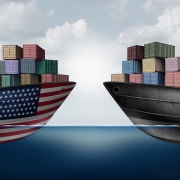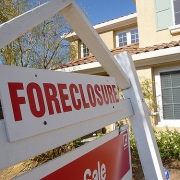There is, perhaps, no historical event that is as misunderstood as the Great Depression. As children in school, we were taught that the crash of 1929 was a result of unregulated capitalism. And while this has presented a great opportunity for market critics to throw laissez-faire capitalism under the bus, there is so more to the story than Keynesian economists would have you believe. Luckily, Austrian economists know better.
To fully understand why the Great Depression began, and why it lasted so long, it is important to consider the many different factors that contributed to this economic downturn of historical proportions. In this first part of the series, we will focus on understanding the Austrian business cycle and the role it played in the crash of 1929.
Booms and Busts
The Austrian business cycle asserts that there are “booms” and “busts” that occur in the market. This cycle begins when the government interferes with monetary policy, inflating the money supply and artificially lowering interest rates, thus, making credit more accessible. We saw this happen in 2008 right before the housing market crashed. More people had access to homeownership because the interest rates were artificially lowered, but as we all soon found out, that feeling of prosperity would not last long.
When the state inflates the money and credit supply, lowering interest rates, an artificial period of prosperity ensues. In Murray Rothbard’s book America’s Great Depression, he estimates that between the years of 1921-1929, the Federal Reserve expanded the money supply by 60 percent. It is no wonder this reaped disastrous consequences. “Easy money” caused people to borrow and spend without a care of what would happen when the market corrected itself.
Companies were pleased to have access to seemingly easy money, which they promptly invested in new areas. Individuals borrowed more money at lower rates with ease and then spent this money in the market. When taken for its face value, this inflation seems to benefit all parties involved. But it was all an economic illusion. This period of artificial prosperity is referred to as an economic “boom” in the business cycle.
But booms cannot last forever. As time goes on, the market corrects itself and business costs and interest rates increase once again. This results in a loss of profits. And with interest rates back up, fewer people now have access to credit and those who borrowed at artificially low rates may struggle to pay higher premiums. All this causes people to panic. They stop spending. Governments intervene and once again manipulate the money supply. And the whole economy comes crashing down. This is the economic “bust” of the Austrian business cycle. This is what happened on “Black Tuesday.”
After the “Roaring Twenties” had made easy money the norm, the Federal Reserve rolled back the money supply by a whopping 30 percent and raised interest rates. And this deflation caused the economy to tank.
We saw this type of “bust” occur in the wake of 2008 when people began foreclosing on their homes in droves and prominent banks, once thought of as “too big too fail” closed their doors forever.
Government Intervention Makes Things Worse
But what is particularly fascinating is how long the Great Depression lasted. Prior to 1929, none of America’s economic depressions lasted for more than four years. In fact, the average for American depressions was about two years. But the Great Depression lasted over ten years, which is why it had such disastrous and far-reaching implications.
To think that this manipulation of our money and credit supply was a result of unbridled capitalism is not only false, it completely disregards the role the Austrian business cycle played in both starting and prolonging the Great Depression.
In the next installment of this series, we will further explore how government intervention prolongs depressions and recessions by taking a closer look at FDR’s New Deal.








